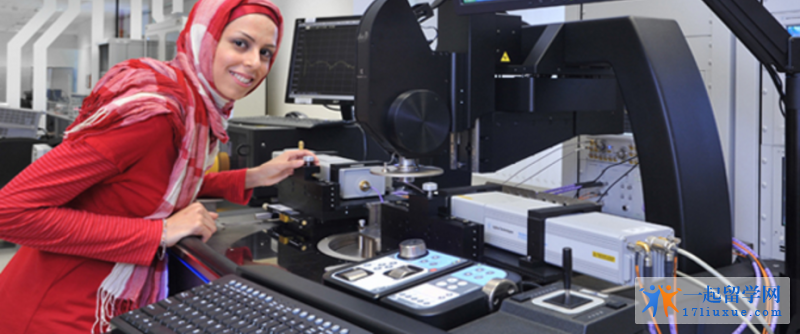![]() OfferEasy
/
找专业
/
新加坡哲学
/ 南洋理工大学电气和电子工程博士专业
OfferEasy
/
找专业
/
新加坡哲学
/ 南洋理工大学电气和电子工程博士专业

项目背景
`更新时间:2023-05-29
专业介绍
研究领域可以是如下领域:
清洁和可再生能源系统
高效能源转换和利用
储能系统
智能能源分配
电力系统和电力电子
3D封装,系统级封装和可印刷电子
生物灵感集成电路和系统
能量收集和绿色集成电路和系统
高速信号完整性电磁兼容性和可靠性
Mm波和太赫兹CMOS IC
智能传感器和高级传感
高级感应
数字媒体处理和应用
智能计算和信息安全
物联网
普及媒体和接口
信号处理理论与系统
大数据和视频分析
自动机器人和智能系统
生物医学成像和信号处理
控制系统技术
机器视觉和计算智能
过程仪表
光波通信和光子学
微波电路,雷达,天线和传播
调制,编码和信号处理
安全通信和网络
无线网络,定位和RFID
太空技术
生物医学设备
生物光子学/纳米光子学
化合物半导体
纳米电子学和纳米技术
显示器和固态照明
MEMS和智能材料
硅/碳/氧化物纳米电子
绿色电子和光子学
特种光纤
为了支持先进的研究,学校拥有九个研究中心,配备先进的先进设备。
关于学费:资助学费和非资助学费分别是32350新币和16700新币。

推荐顾问
世界排名
2020年
151
2019年
151
2017年
151
语言要求
类型
雅思
托福
PTE
Listen
--
--
--
Speak
--
--
--
Read
--
--
--
Write
--
--
--
总分
--
--
--
学术要求
一般入学要求
获得至少二级以上或同等荣誉学士学位
对于母语不是英语的国际申请人,需要提供良好的托福成绩。 测试日期必须在申请之日起2年内。 雅思也可以用来代替托福。
国际申请者还需要具有GRE成绩。 测试日期必须在您申请之日起5年内或更短。
您需要在线申请附上TOEFL和GRE考试成绩的复印件。 当您在申请中发送时,不需要官方的ETS考试成绩。
课程设置
Programmes:Minimum:方案: 最低
Doctor of Philosophy:2 years:哲学博士: 2年
No:Proposed Research Project Title:否: 拟议研究项目名称
1.:Distributed Control and Optimization of Smart Grids:1.: 智能电网的分布式控制与优化
2:Model Predictive Control on a Chip:2: 芯片上的模型预测控制
3:Hierarchical control strategies of distributed energy storage systems for intermittency management:3: 用于间歇性管理的分布式储能系统的分层控制策略
4:Controlling Light through Strongly Scattering Media :4: 通过强散射介质控制光
:(Electronics and Electrical & Systems)::( 电子和电气及系统)
5:Data analytics for smart grid stability assessment and control:5: 用于智能电网稳定性评估和控制的数据分析
6:Coordinated operation and control of networked-microgrids:6: 网络化微电网的协调运行和控制
7:Optimal operation of combined cooling heating power (CCHP) systems:7: 组合冷却加热功率 (CCHP) 系统的最佳运行
No:Proposed Research Project Title:否: 拟议研究项目名称
1.:Oxide resistive memory for universal memory application:1.: 用于通用存储器应用的氧化物电阻式存储器
2:Bias-temperature instability of small area MOSFETs:2: 小面积mosfet的偏置温度不稳定性
3:Development and characterization of CMOS-compatible Gallium Nitride high electron mobility transistors:3: CMOS兼容氮化镓高电子迁移率晶体管的开发和表征
4:Neuromorphic Smart Sensors for Implantable Brain Machine Interfaces:4: 用于植入式脑机接口的神经形态智能传感器
5:Morphological Learning in Spiking Neurons: A New Hardware Efficient Machine Learning Method:5: 尖峰神经元的形态学习: 一种新的硬件高效机器学习方法
6.:Full-Visible Single Material Nanocrystal Lasers:6.: 全可见单材料纳米晶体激光器
7:MID-INFRARED PHOTODETECTORS WITH COLLOIDAL QUANTUM DOTS:7: 具有胶体量子点的中红外光电探测器
8:Optoelectronic Devices with Colloidal Nanomaterials:8: 具有胶体纳米材料的光电器件
9:Controlling Light through Strongly Scattering Media (Electronics and Electrical & Systems):9: 通过强散射介质 (电子和电气及系统) 控制光
10:Fabrication and PL/PLE study of Ge-on-Si photonic materials:10: Ge-on-Si光子材料的制备与PL/PLE研究
11:Design of tensile strained Ge-on-Si laser:11: 拉伸应变Ge-on-Si激光器的设计
12:Reconfigurable Radio Baseband for Wireless Communication Systems (Electronics and Info-Communications):12: 用于无线通信系统 (电子和信息通信) 的可重构无线电基带
13:Energy-Efficient and High-Throughput Signal Processing Hardware Platform (Electronics and Info-Communications):13: 节能高通量信号处理硬件平台 (电子和信息通信)
14:High Electron Mobility Transistor Structures for High Power RF Devices using Gallium Nitride based wide bandgap Semiconductors on Silicon:14: 用于高功率RF器件的高电子迁移率晶体管结构,使用氮化镓基宽带隙半导体在硅上
15:Studies on epitaxial growth and characterization of lattice matched InAlN/GaN Heterostructures on silicon for high power applications:15: 高功率应用硅上晶格匹配InAlN/GaN异质结构的外延生长和表征研究
16:Gallium Nitride -based Ultraviolet (UV) photodetectors on Silicon:16: 硅上基于氮化镓的紫外 (UV) 光电探测器
17:Microfluidic in vitro model of epithelial cells & their tight junction assessment:17: 微流体体外上皮细胞模型及其紧密连接评估
18:Plasma etching of dielectrics for sub-50 nm structures:18: 用于50 nm以下结构的电介质的等离子体蚀刻
19:Development and Characterization of the Polymer-based Thin-film Photovoltaic Solar Cells:19: 聚合物基薄膜光伏太阳能电池的开发和表征
20:MOVPE growths of narrow bandgap semiconductor alloys for mid-infrared photonics:20: 用于中红外光子学的窄带隙半导体合金的MOVPE生长
21:Charge transportations in high efficiency Peroviskite solar cells:21: 高效Peroviskite太阳能电池中的电荷传输
22:High efficient compound semiconductor nanostructures based hybrid organic solar cells:22: 基于高效化合物半导体纳米结构的混合有机太阳能电池
23:Controllable compound semiconductor nanostructures for photonic applications:23: 用于光子应用的可控化合物半导体纳米结构
24:MOVPE growth of semiconductor quantum dots for mid-infrared photonics:24: 用于中红外光子学的半导体量子点的MOVPE生长
25:Carbon Nanotubes Arrays for Field Emission Applications:25: 用于场发射应用的碳纳米管阵列
26:Synthesis of carbon nanotubes and carbon hybrids nanostructures:26: 碳纳米管和碳杂化物纳米结构的合成
27:Thin film copper oxide heterojunction solar cell with plasmonic nanostructures:27: 具有等离子体纳米结构的薄膜氧化铜异质结太阳能电池
28:Negative refraction in metamaterials:28: 超材料中的负折射
29:Ultrasensitive metadevices for biosensing:29: 用于生物传感的超灵敏元设备
30:Ultra-fast all-optical switching based on graphene:30: 基于石墨烯的超快全光切换
31:Electrochemical systems for energy harvesting and storage:31: 用于能量收集和存储的电化学系统
32:metal halides based transistors: investigations of charge transport properties and device performance enhancement:32: 基于金属卤化物的晶体管: 电荷传输特性和器件性能增强的研究
33:Studies of electrical properties of self-healable polymer dielectric:33: 自愈合聚合物电介质的电性能研究
34:Interface engineering for efficient and stable perovskite solar cells:34: 高效稳定钙钛矿太阳能电池的接口工程
35:Organic Photovoltaics from water processable nanomaterials: engineering vertical morphology and investigating the charge transport mechanism:35: 来自可水处理纳米材料的有机光伏: 工程垂直形态并研究电荷传输机制
36:Structured functional spheres generated by an in-fibre fluid instability (Electronics and Info-Communications):36: 由纤维内流体不稳定性 (电子和信息通信) 产生的结构化功能球体
37:Atomic 2D nanomaterials based wearable/flexible sensing electronics for personal health-monitoring system(Electronics and Info-Communications):37: 基于原子2D纳米材料的可穿戴/柔性传感电子设备,用于个人健康监测系统 (电子和信息通信)
5.:5.:5. :5。
6.:6.:6.:6。
7.:7.:7. :7。
8.:8.:8.: 8。
9.:9.:9.:9。
10.:10.:10.:10。
11.:11.:11.:11。
12.:12.:12. :12。
13.:13.:13.:13。
14.:14.:14.:14。
15.:15.:15.:15。
16.:16.:16.:16。
17.:17.:17.:17。
18.:18.:18.:18。
19.:19.:19.:19。
20.:20.:20.:20。
21.:21.:21.:21.
22.:22.:22.:22.
23.:23.:23.:23。
24.:24.:24.:24。
25.:25.:25.:25.
26.:26.:26.:26。
27.:27.:27.:27。
28.:28.:28.:28。
29.:29.:29.:29。
30.:30.:30.:30。
31.:31.:31.:31.
相关专业





